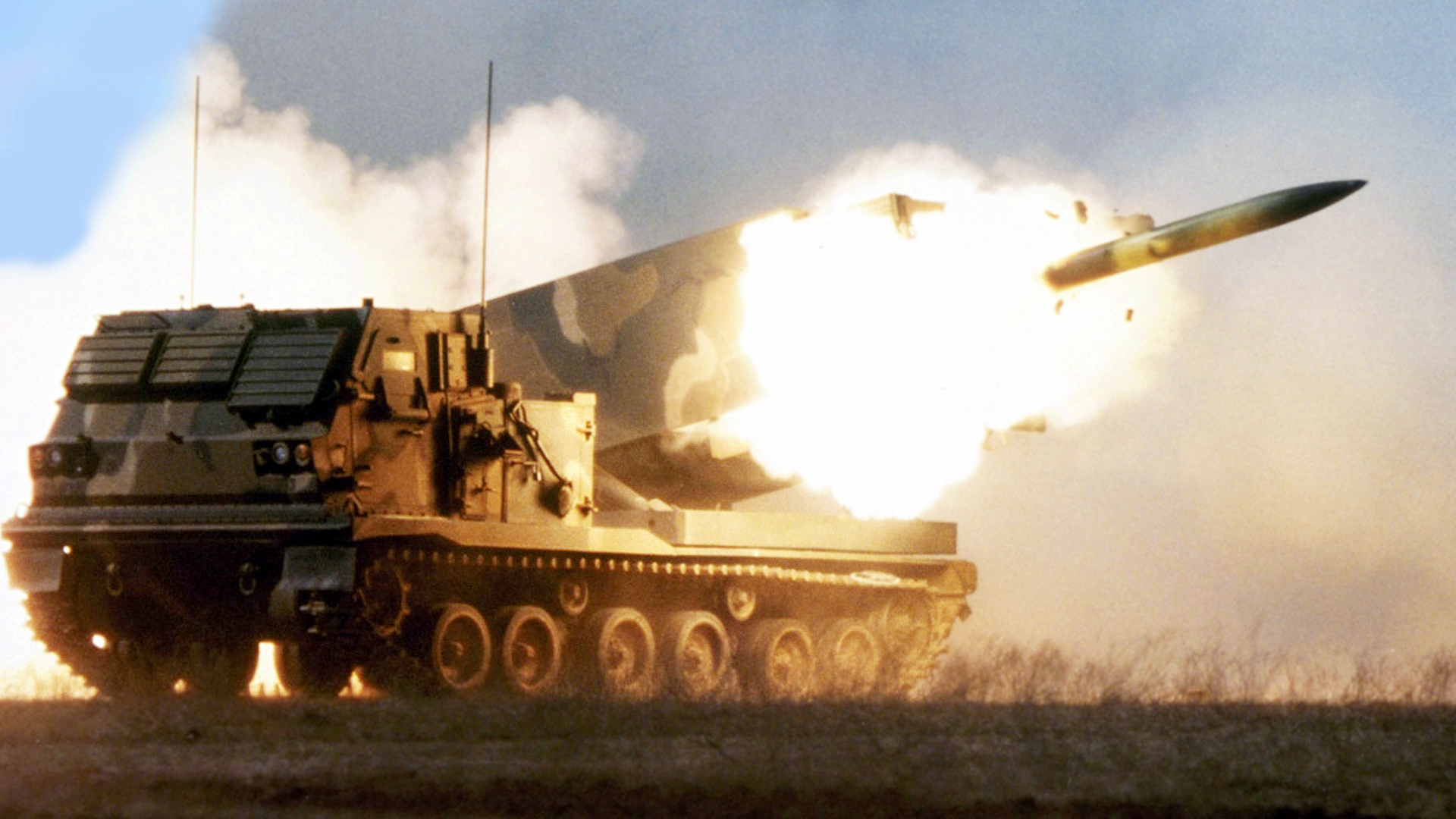Ukrainian officials said on Friday that the U.S.-provided M142 High Mobility Artillery Rocket Systems, or HIMARS, have destroyed more than 30 Russian military hubs. Now the Russians have a new U.S.-made rocket artillery system to contend with, the M270 Multiple Launch Rocket System (MLRS), which fires the same suite of ammunition as HIMARS, but can be loaded with twice as many rockets at a time.
Ukrainian Defense Minister Oleksii Reznikov on Friday announced his nation has received its first tranche of M270s.
The “first MLRS M270 have arrived!” he announced in a Tweet. “They will be good company for #HIMARS on the battlefield. Thank you to our partners. No mercy for the enemy.”
Reznikov did not say where it came from, but both the United Kingdom and Norway have promised to provide versions of the U.S.-made system to Ukraine. The German government has also pledged to supply the Ukrainian armed forces with a number of MARS II systems, a country-specific derivative of the M270.
Regardless, Reznikov is right about the M270 being good company for the HIMARS.
Both fire the same family of 227mm artillery rockets, as well as Army Tactical Missile System (ATACMS) short-range ballistic missiles, though Ukrainain forces are not currently expected to receive any of the latter munitions. All of these rounds come preloaded in canisterized ammunition “pods.”
There are differences though between the two systems.

The M270 features a launch system mounted on a tracked chassis derived from the Bradley Fighting Vehicle. A single M270 can be loaded with two of the standard ammunition pods at a time, allowing it to fire up to 12 rockets or two ATACMS missiles before needing to be reloaded.

The HIMARS, on the other hand, features a smaller launch system, which can only hold one ammunition pod at a time. It is mounted on a 6×6 Family of Medium Tactical Vehicles (FMTV) truck chassis. For what the M142 gives up in firepower it makes up in transportability and on-road mobility. It can even be rapidly deployed via a C-130. You can read much more about the M142 and the M270 here.
The maximum range of either of these systems is dependent on what type of munition they’re firing. The longest-range artillery rockets currently available for the system are the M30 (submunition warhead) and M31 (unitary warhead) precision-guided types, which are GPS/INS guided and can hit targets out to around 43 miles (70 kilometers). The far larger ATACMS missiles can engage threats out to 186 miles (300 kilometers) depending on the variant.
So far, the Biden administration has sent M30/M31 series rockets, but has declined to provide Ukraine with any ATACMS missiles.
But even with the current rockets, the Ukrainian Ministry of Defense on Friday said that “with HIMARS” its army is “cutting off the [R]ussian hydra’s head on a daily basis. We will continue to do so until we have succeeded in cutting off the last head.”

On Friday afternoon, a senior U.S. military official told reporters that it appears the HIMARS strikes on logistics nodes are helping Ukrainian troops keep Russia’s “limited to incremental – if any – gains around the northern Donbas” at bay.
“Striking targets like ammunition [storage sites]…and other logistical supplies, command and control [facilities], and all those things have a direct impact on the ability to conduct operations on the front line,” said the official, speaking on the condition of anonymity. “So I would say yes, although they’re not shooting the HIMARS on the front lines, they are having a very, very significant effect on that.”
Some data appears to show that Russian artillery fire in Donbas has tailed off in conjunction with the introduction of the HIMARS into Ukraine.
The senior U.S. defense official, however, could not provide specifics when asked about how badly Russia’s ammunition supply has been affected by Ukrainian long-range fires from HIMARS.
All 12 HIMARS promised by the U.S. have now been delivered to the Ukrainians, the official said. However, it was unknown whether any of the latest shipment of four are being used in combat yet.
Asked by The War Zone if Ukraine is using U.S. intelligence to help guide HIMARS targeting, the official offered a purposefully vague response.
“We’re helping the Ukrainians,” the official said. “I’m not gonna provide particulars as to how that works. But we’ve been able to give them information and they’ve been able to use that information the way they choose to do so.”
The official said that while “it is probably too early to make a determination” about how drastically HIMARS is affecting the battlefield in terms of strangling Russian supplies, “I have to believe that the HIMARS have had an effect” on Russian morale.
“It’d be hard not to have morale issues at times when you’re supposed to get supplies, but those supplies were destroyed 40 kilometers behind your line.”
It remains to be seen how much more impact the M270 MLRS will have on the Russian operations, but it looks like we will find out soon.
Contact the author: howard@thewarzone.com
